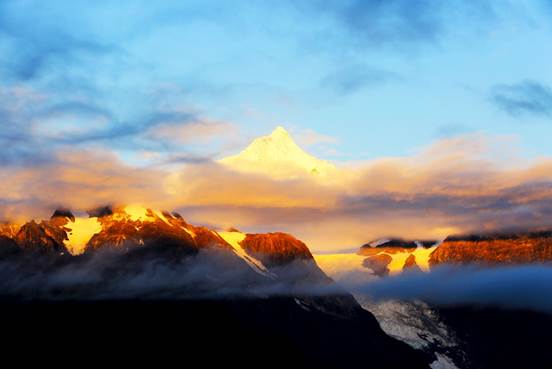Persistent toxic substances released by industry and agriculture, or persistent organic pollutants (POPs) in South Asia have been travelling across the ridges and valleys of the Himalayas to reach the Tibetan Plateau, according to a recent study by researchers from the Institute of Tibetan Plateau Research, Chinese Academy of Sciences (ITPCAS). ” The Himalayas serve as a ‘barrier’ to the atmospheric transport of POPs, but how effective this barrier has not been properly investigated before.” said Dr. GONG Ping, lead author of the study.

Photograph by TIE Junxian
The unique high mountain region centered on the Tibetan Plateau, or the Third Pole, is considered by many as the last pure land on earth. However, according to previous studies, the pureness has been compromised by pollutants from nearby emission. How these pollutants are transported to the Tibetan Plateau interests Dr. GONG Ping and his team.
Coupling with a three-year monitoring in the Himalayas for POPs, the researchers developed a model to simulate the transport processes of POPs along river valleys and mountain slopes of the Himalayas. The model reveals that more than 90% of POPs are trapped along the slopes of the Himalayas due to rainfall scavenging and gas deposition to surface ground, and for the POPs remaining in air, the transporting efficiencies through valleys are 2-3 times higher than those along the slopes. However, due to the limited spatial coverage of mountain valleys, the amount transported through valleys only accounts for a small part of the total. Mountain ridge remains the dominant transport pathway for POPs across the Himalayas. (Reported by XIA Cuihui)
This study was supported by the Strategic Priority Research Program (PAN-TPE) of the Chinese Academy of Sciences.
DOI: https://pubs.acs.org/doi/10.1021/acs.est.9b01223
Full-text available at https://pubs.acs.org/doi/pdf/10.1021/acs.est.9b01223


